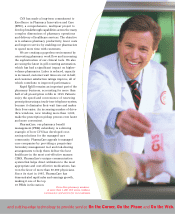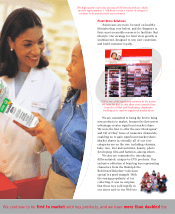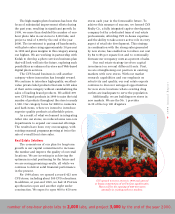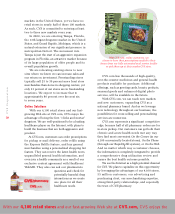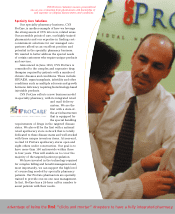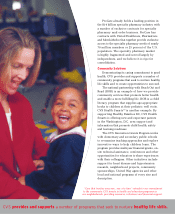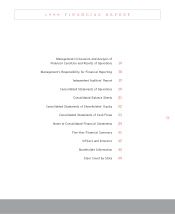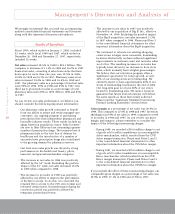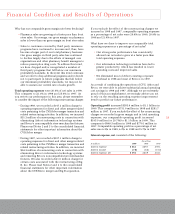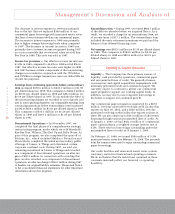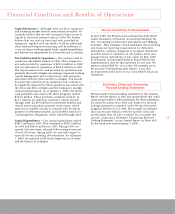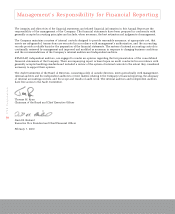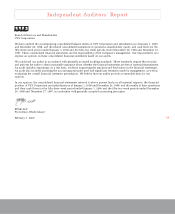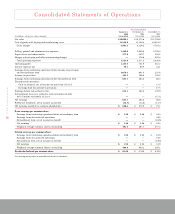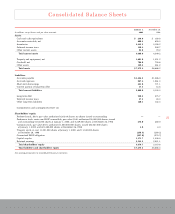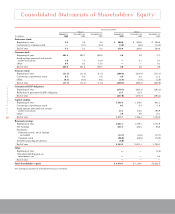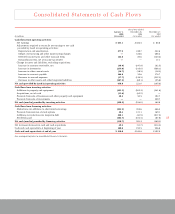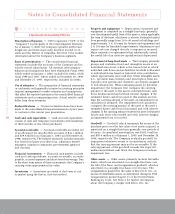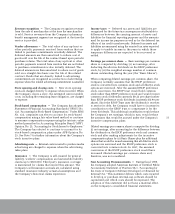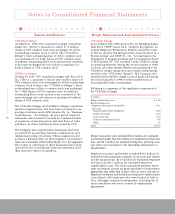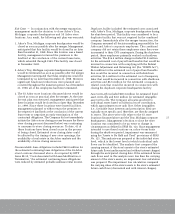CVS 1999 Annual Report Download - page 19
Download and view the complete annual report
Please find page 19 of the 1999 CVS annual report below. You can navigate through the pages in the report by either clicking on the pages listed below, or by using the keyword search tool below to find specific information within the annual report.
17
Capital Resources ~ Although there can be no assurance
and assuming market interest rates remain favorable, we
currently believe that we will continue to have access to
capital at attractive interest rates in 2000. We further
believe that our cash on hand and cash provided by
operations, together with our ability to obtain additional
short-term and long-term financing, will be sufficient to
cover our future working capital needs, capital expenditures
and debt service requirements for at least the next 12 months.
Net Cash Provided by Operations ~ Net cash provided by
operations was $658.8 million in 1999. This compares to
net cash provided by operations of $221.0 million in 1998
and net cash used in operations of $105.8 million in 1997.
The improvement in net cash provided by operations was
primarily the result of higher net earnings, improved working
capital management and a reduction in cash payments
associated with the Arbor and Revco mergers. You should
be aware that cash flow from operations will continue to
be negatively impacted by future payments associated with
the Arbor and Revco mergers and the Company’s strategic
restructuring program. As of January 1, 2000, the future
cash payments associated with these programs totaled
$123.0 million. These payments primarily include: (i)
$12.1 million for employee severance, which extends
through 2000, (ii) $9.0 million for retirement benefits and
related excess parachute payment excise taxes, which
extend for a number of years to coincide with the future
payment of retirement benefits, and (iii) $98.5 million for
continuing lease obligations, which extend through 2020.
Capital Expenditures ~ Our capital expenditures totaled
$493.5 million in 1999. This compared to $502.3 million
in 1998 and $341.6 million in 1997. During 1999, we
opened 146 new stores, relocated 299 existing stores and
closed 170 stores. During 2000, we currently expect to
open 425 stores, including 250 relocations. As of January
1, 2000, we operated 4,098 retail drugstores in 26 states
and the District of Columbia.
Recent Accounting Pronouncements
In June 1998, the Financial Accounting Standards Board
issued Statement of Financial Accounting Standards No.
133, “Accounting for Derivative Instruments and Hedging
Activities.” This statement, which establishes the accounting
and financial reporting requirements for derivative
instruments, requires companies to recognize derivatives
as either assets or liabilities on the balance sheet and
measure those instruments at fair value. In May 1999,
the Financial Accounting Standards Board delayed the
implementation date for this statement by one year. We
expect to adopt SFAS No. 133 in 2001. We currently are in
the process of determining what impact, if any, this
pronouncement will have on our consolidated financial
statements.
Cautionary Statement Concerning
Forward-Looking Statements
We have made forward-looking statements in this Annual
Report that are subject to risks and uncertainties that could
cause actual results to differ materially. For these statements,
we claim the protection of the safe harbor for forward-
looking statements contained in the Private Securities
Litigation Reform Act of 1995. We strongly recommend
that you become familiar with the specific risks and
uncertainties that we have outlined for you under the
caption “Cautionary Statement Concerning Forward-
Looking Statements” in our Annual Report on Form 10-K
for the fiscal year ended January 1, 2000.
Financial Condition and Results of Operations


